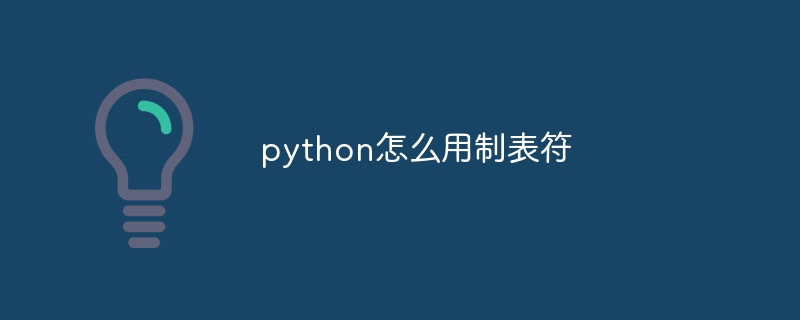
The tab character (\t) in Python or "\t" in raw strings is used to create indentation in a string or text. It is often used for alignment in code segments or data columns, such as: Code indentation: Tab characters are used to indent code segments to improve readability. Data alignment: Tab characters are used to align data columns to create neat tables.

How to use the tab character in Python
In Python, the tab character is a special character, Used to create indentation in strings or text. It is often used for alignment within code segments or data columns.
Methods of using tab characters
There are two ways to represent tab characters in Python:
\\t: escape sequence, representing a tab character.\t: The tab character in the original string, which can be prefixed with r or Triple Quoted Strings (TQS).Examples:
# 方法 1:转义序列 my_string = "Hello\tWorld" # 方法 2:原始字符串 my_string = r"Hello\tWorld" # 方法 3:Triple Quoted Strings my_string = """Hello World"""In all these examples, the value of themy_stringvariable will be a string where "Hello There is a tab character between " and "World".
Use tab characters in code indentation
Tab characters are often used in Python to indent code segments to improve readability. For example:
def my_function(): print("Hello") for i in range(10): print(i)In this example, the indentation inmy_functionuses a tab character (\t). This makes the code easier to read and understand.
Using tabs in data alignment
Tabs can also be used to align data columns to create neat tables. For example:
print("Name\tAge\tCountry") print("John\t30\tUSA") print("Jane\t25\tUK")This will print a neat table where the "Name", "Age" and "Country" columns have been tab-aligned.
The above is the detailed content of How to use tab character in python. For more information, please follow other related articles on the PHP Chinese website!




